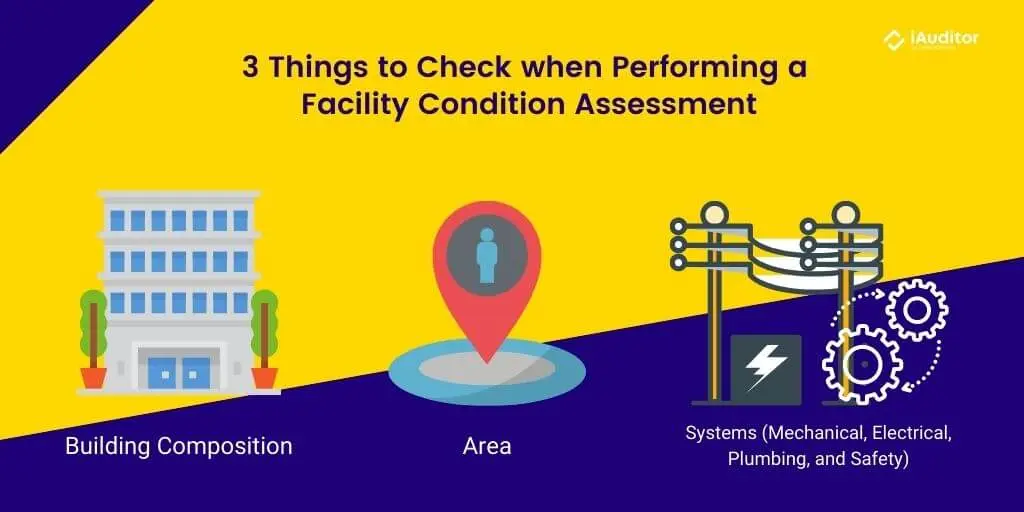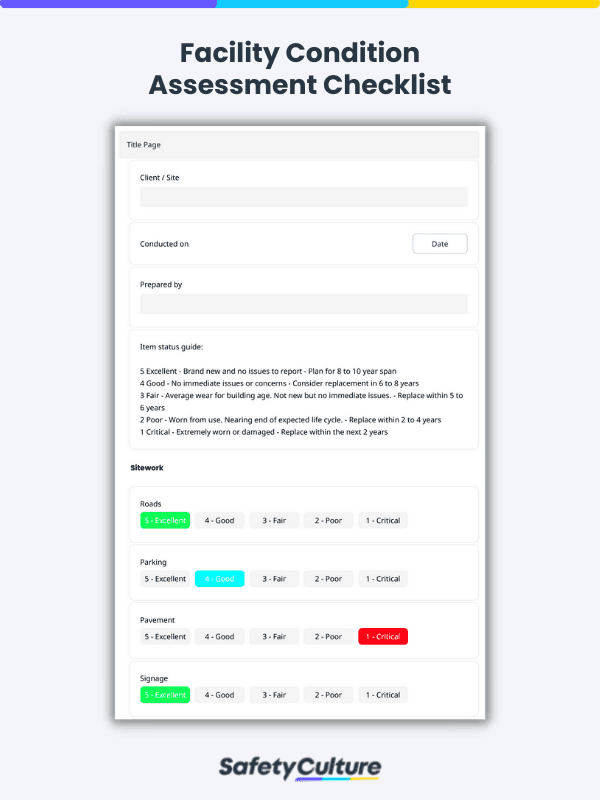What is a Facility Condition Assessment?
A Facility Condition Assessment (FCA) is a detailed evaluation of a facility’s condition. It involves a thorough visual inspection performed by architects, engineers, and skilled-trade workers. Its primary purpose is to help owners or managers of real estate portfolios to identify areas of the facility that need maintenance and repair investments.
Why Perform a Facility Condition Assessment?
Knowing beforehand what to prioritize for repair and maintenance gives clients time to prepare a budget. It also allows them to save money since proactive maintenance costs are significantly lower than reactive repairs. An FCA also informs clients of the best practices in maintaining and maximizing the lifespan and performance of their facilities.
What is a Building Condition Assessment?
A Building Condition Assessment (BCA), also known as a Property Condition Assessment (PCA), is an investigation or evaluation of a building or property. It seeks to provide details regarding the property’s building systems and structural condition.
What is the difference between a Facility Condition Assessment and Building Condition Assessment?
Both assessments involve conducting thorough inspections, however differ in purpose. A Building Condition Assessment or Property Condition Assessment is ordered as part of a due diligence process when a property is being sold. This is either requested by a lender before issuing a loan, or an investor/buyer before purchasing. Meanwhile, a Facility Condition Assessment is requested for owners or managers of real estate properties to help them understand and maintain the condition and value of their assets over time.
What to Check When Performing a Facility Condition Assessment
An effective facility condition assessment thoroughly evaluates each aspect of the facility required to function. In doing so, issues and errors can be identified before they become a problem. Here are the top 3 things to check when performing a facility condition assessment:
-
Building Composition
A strong building structure is required to support the facilities, equipment, and systems it houses without collapsing. Inspect foundations and columns for cracks, hairline fractures, concrete flaking, and ruptures. Check the welding in steel joists and take note of gaps and damage. Inspect if floors are uneven and check if any ceilings are sagging. Review the building’s interior and exterior elements for damage and any signs of decay. Early detection of problem areas is essential to maintaining a strong building structure and will help ensure that the building complies with regulatory building codes such as the International Building Code (IBC) or the International Existing Building Code (IEBC).
-
Area
The area determines the overall accessibility of the establishment, and it also complements a well-structured building by providing protection against natural catastrophes. Inspect roads, pavements, and parking for cracks and uneven surfaces. Ensure that storm drains have been installed to protect against flooding during storms, and erosion control measures are put in place to prevent building damage.
-
Systems (Mechanical, Electrical, Plumbing, and Safety)
Systems are necessary to keep facilities functioning. Inspect piping and plumbing fixtures and check for clogging, low water pressure, and leaking. Ensure that heating, ventilation, and air conditioning (HVAC) systems produce consistent airflow and take note of poor indoor air quality and uneven temperature throughout the building. Review electrical systems and take note of tripping breakers, dead power outlets, and unprotected wiring. Inspect elevators and ensure that sheaves and ropes are in good condition, shafts are aligned, and they are energy efficient. Make sure that fire alarms and fire suppression systems are installed and working.

Facility Condition Assessment
Technology to Streamline Building Condition Assessments
Using paper-based building condition assessment forms can be burdensome to construction professionals as it is prone to damage and loss. It can cause repetitive works and put the business at risk. Technology can provide enhanced speed, accuracy, and convenience for building condition assessments. A digital solution like SafetyCulture (formerly iAuditor) can replace paper-based building condition assessment forms with a mobile app and cloud-based solution.



